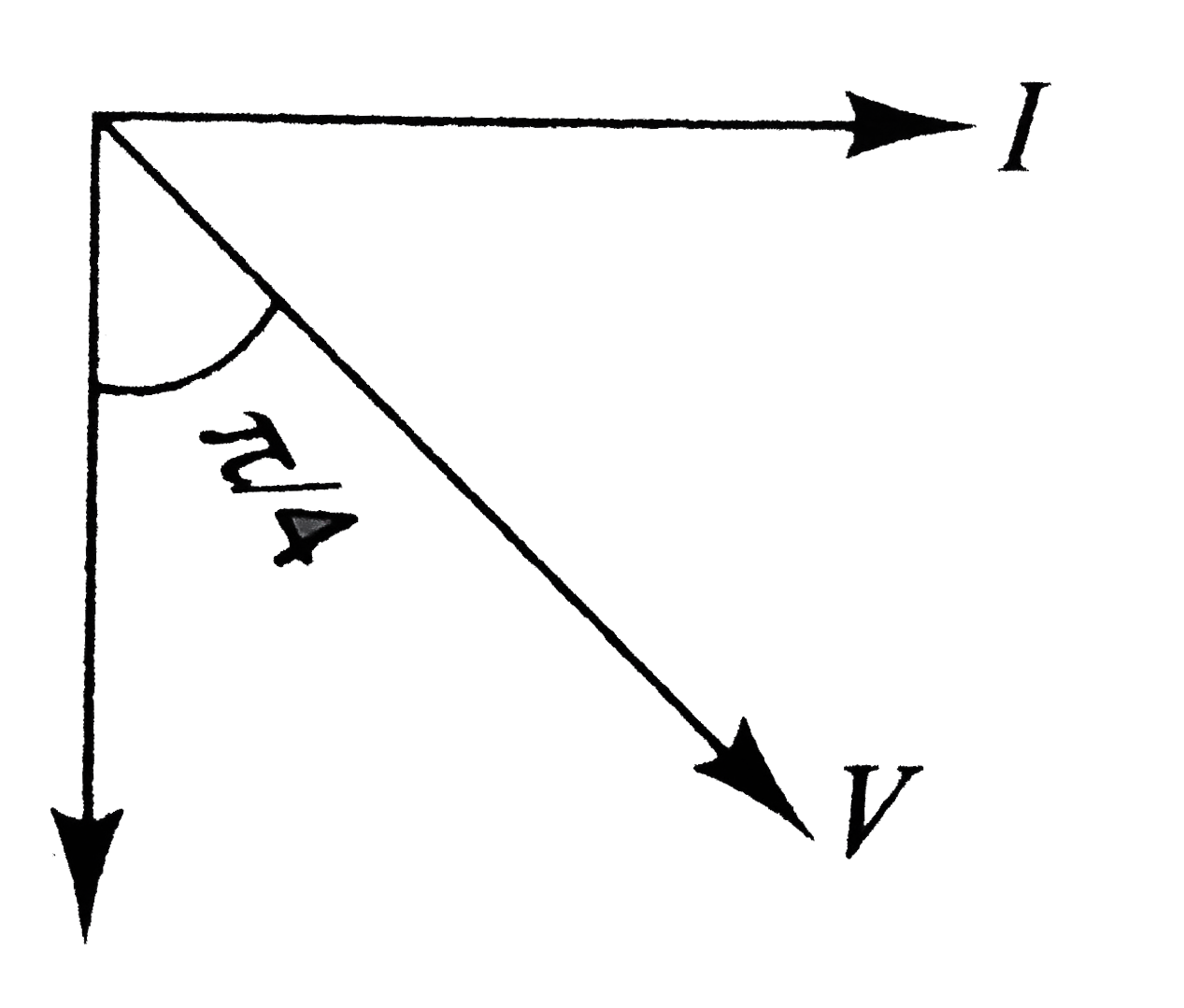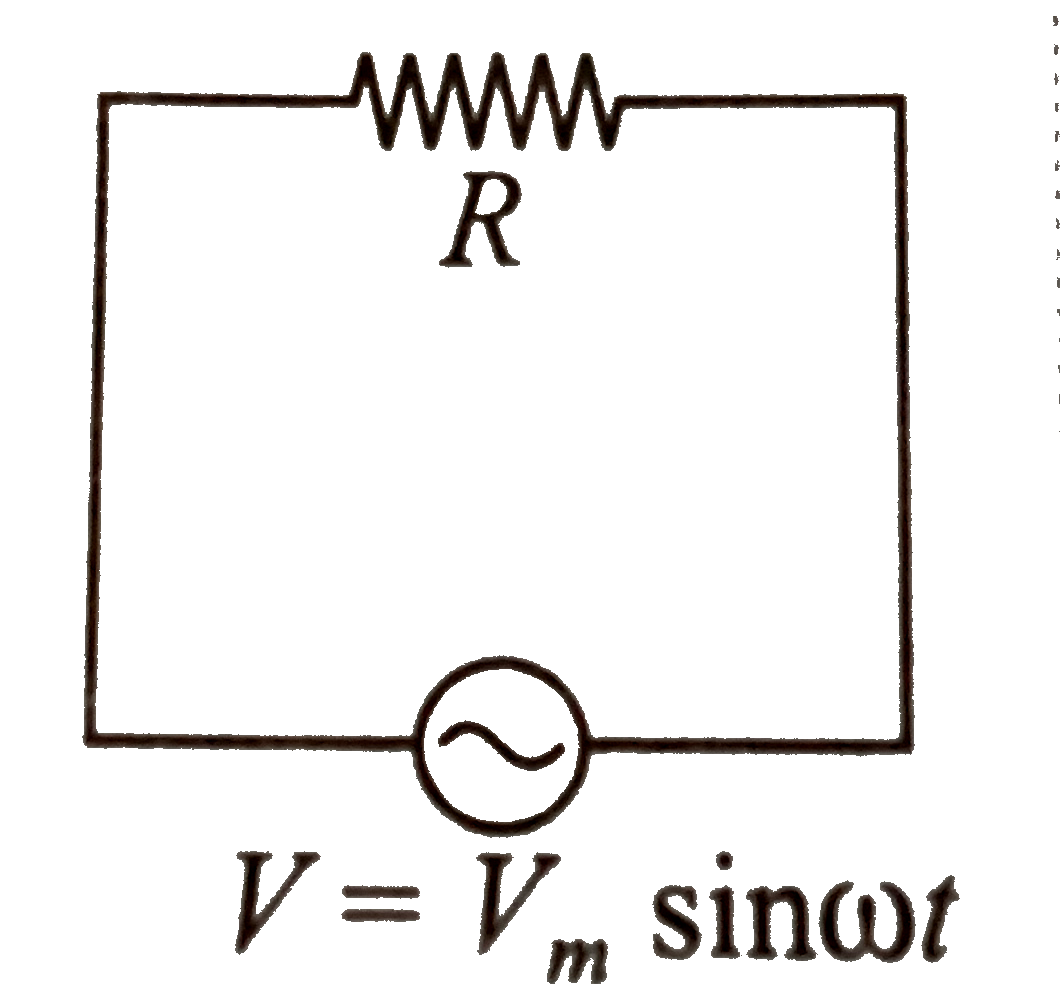A current source sends a current I=(i0)cos(ωt), When connected across an unknown load, it gives a voltages output of v=v0sin[ωt+(π/4)] across that load. Then the voltage across the current source may bebroaught in phase with the current through it by
![A current source sends a current I=(i0) cos (omegat), When connected across an unknown load, it gives a voltages output of v=v(0)sin [omega t+(pi//4)] across that load. Then the voltage across the current source may bebroaught in phase with the current through it by](https://d10lpgp6xz60nq.cloudfront.net/physics_images/BMS_V05_C05_E01_083_Q01.png)
Connecting an inductor in series with the load
Connecting an capactor in series with the load
Connecting an inductor in parallel with the load
Connecting an capactor in parallel with the load
The correct Answer is:A
v=(v0)sin[ωt+(π/4)]=(v0)cis[0=ωt−(π/4)]
Since V lags currents an inductor can bring it in phases with currents.

Related Playlists
- BOOK - CENGAGE PHYSICS ENGLISHCHAPTER - ALTERNATING CURRENTEXERCISE - Exercises Multiple Correct5videos
ALTERNATING CURRENT
- BOOK - CENGAGE PHYSICS ENGLISHCHAPTER - ALTERNATING CURRENTEXERCISE - Exercises Assertion-reasoning7videos
ALTERNATING CURRENT
- BOOK - CENGAGE PHYSICS ENGLISHCHAPTER - ALTERNATING CURRENTEXERCISE - Exercises Subjective15videos
ALTERNATING CURRENT
- BOOK - CENGAGE PHYSICS ENGLISHCHAPTER - ATOMIC PHYSICSEXERCISE - ddp.4.315videos
ATOMIC PHYSICS
Similar Practice Problems
- Question 1 - Select One
In the question number 44, the phase difference between the voltage across the source and current is
A80.2∘B31∘C50.2∘D38.2∘ - Question 1 - Select One
An ac source of voltage V=Vmsinωt is connected across the resistance R as shown in figure. The phase relation between current and voltage for this circuit is
 Aboth are in phaseBboth are out of phase by 90∘Cboth are out of phase by 120∘Dboth are out of phase by 180∘
Aboth are in phaseBboth are out of phase by 90∘Cboth are out of phase by 120∘Dboth are out of phase by 180∘
Similar Questions
Find the current through the 10Ω resistance connected across AB
 View Solution
View SolutionA small signal voltage V(t)=V0sinωt is applied across an ideal capacitor C:
View SolutionThe current through inductor of 2H is given by I=2tcos2t. The voltage across the inductor is
View SolutionA voltage source sends a current 2-5 A to a resistor of 20 Ω connected across it for 5 minutes. Calculate : (i) the p.d. of the source, (ii) the electrical energy supplied by the source, and (iii) the heat in cal, produced in the resistor.
View SolutionAC source of voltage of V=V0sin(100t) is connected with box which contain ether RL of RC circuit. If voltage leads the current by phase π/4 then :
View SolutionAn alternating voltage E=E0sinωt , is applied across a coil of inductor L. The current flowing through the circuit at any instant is
View SolutionProve that the current flowing through an ideal inductor connected across a.c. source, lags the voltage in phase by π2.
View SolutionWhen an alternating voltage of 220V is applied across a device P, a current of 0.25A flows through the circuit and it leads the applied voltage by a angle π2 radian. When the same voltage source is connected across another device Q, the same current is observed in the circuit but in phase with the applied voltage. What is the current when the same source is connected across a series combination of P and Q?
View Solution

